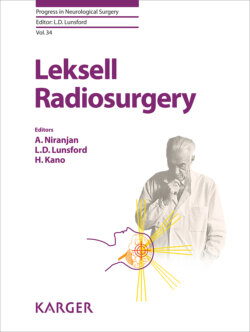Читать книгу Leksell Radiosurgery - Группа авторов - Страница 63
На сайте Литреса книга снята с продажи.
Magnetoencephalography
ОглавлениеMagnetoencephalography (MEG) provides functional imaging of cortical brain function by detecting the magnetic field associated with intracranial neuronal electric activity. In practice, it has been used to identify the sensory, motor, visual, and speech cortices [15]. This is critically important as the development of an intracranial lobar lesion such as AVM can result in the displacement of the functional brain cortex. Thus, the identification of critical brain regions based on anatomical imaging alone using MRI may not be accurate. The need to visualize and protect critical cortical regions is crucial, as inclusion of these regions in the radiosurgery dose plan can result in permanent neurological deficits related to adverse radiation effects. The integration of MEG-based functional imaging to maximize the accuracy of radiosurgery dose planning has been performed. Aoyama et al. [16] reported 21 patients who underwent both radiosurgery and MEG. They found that modification of the original plan occurred in 71% of patients. We incorporated MEG-based critical cortex localization into Gamma Knife SRS dose planning and showed that it can be a valuable adjunct imaging in cases where critical cortical structures are at risk of receiving high doses [17]. These modifications to maximize planning conformality may serve to minimize the risk of developing symptomatic adverse radiation effects or even permanent deficits from sustained radiation injury (Fig. 7).
Fig. 7. Radiosurgery dose plan for an AVM near the motor cortex. This patient underwent MEG to map his motor cortex, which is shown as red volume. The radiosurgery dose plan is shown in yellow. The MEG map of the motor cortex was used to reduce the dose fall off on the motor cortex.
